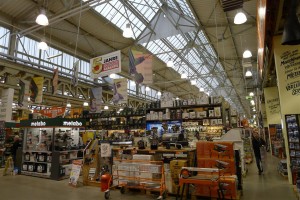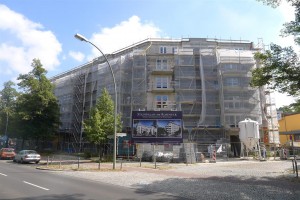[A version of this article was also posted at GreenBuildingAdvisor.com].
My apologies to anyone who is expecting a post about the influential modernist design/build movement that flourished in 1920’s Germany. The Bauhaus of this post’s title is a home center along the lines of Home Depot and Lowe’s in America.
I haven’t actually found any hardware stores in Berlin — something akin to Aubuchon in New Hampshire, or the mom-and-pop hardware stores that may still exist in some small towns in America. The biggest home improvement store chain in Germany is called OBI, which is the third largest such company in the world, after Home Depot and Lowe’s. I have heard that there is an OBI up in the Mitte section of Berlin, but Bauhaus is the home improvement store that I have seen while biking around town. In fact, a large new branch of this Swiss-based retailer is being constructed not far from our apartment. DIY is apparently alive and well in Berlin.
A couple of weeks ago, I had occasion to pick up a few items at Bauhaus. Since I was not in a rush, I decided to tour the store with my camera, taking photos of things that seemed notable, particularly as compared with the product selection at home improvement stores in the US.
The rest of this post contains lots of photos interspersed with brief notes. If visiting the Home Depot doesn’t give you the shivers, you might find something of interest herein.




